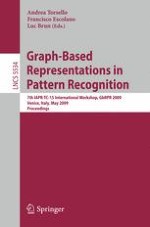2009 | Book
Graph-Based Representations in Pattern Recognition
7th IAPR-TC-15 International Workshop, GbRPR 2009, Venice, Italy, May 26-28, 2009. Proceedings
Editors: Andrea Torsello, Francisco Escolano, Luc Brun
Publisher: Springer Berlin Heidelberg
Book Series : Lecture Notes in Computer Science
